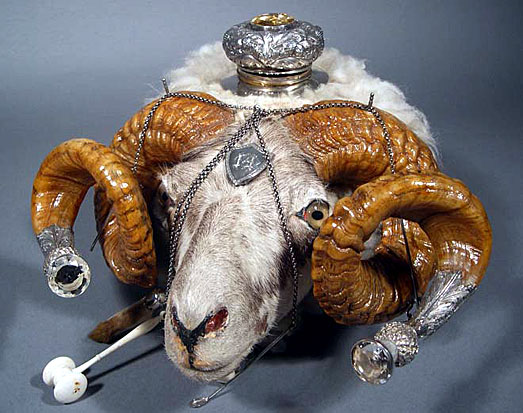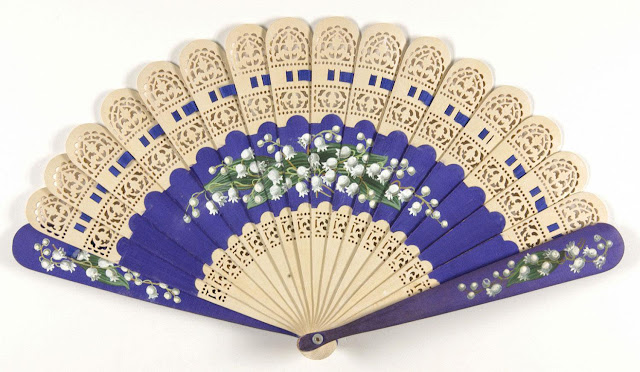 QUESTION: I recently attended an auction in central Pennsylvania. Included in the many lots were several pieces of attractively painted furniture. I was particularly drawn to a couple of what I thought were blanket chests, decorated with folk art motifs. But when they came up for bid, the auctioneer called them bridal chests. I’d like to know more about type of painted furniture. What is the origin of folk-art painted furniture?
QUESTION: I recently attended an auction in central Pennsylvania. Included in the many lots were several pieces of attractively painted furniture. I was particularly drawn to a couple of what I thought were blanket chests, decorated with folk art motifs. But when they came up for bid, the auctioneer called them bridal chests. I’d like to know more about type of painted furniture. What is the origin of folk-art painted furniture?
ANSWER: Handpainted folk art furniture was highly influenced by cultural traditions brought to America by immigrants.
 The peak of handcrafted folk art painted furniture ran from the 1790s to the 1880s. There weren’t any real art schools and not all that many fine artists in the early 19th century. Many talented individuals became commercial painters and worked with special skill on furniture, signs and other useful objects.
The peak of handcrafted folk art painted furniture ran from the 1790s to the 1880s. There weren’t any real art schools and not all that many fine artists in the early 19th century. Many talented individuals became commercial painters and worked with special skill on furniture, signs and other useful objects.
From the 1870s on, Mennonites from Poland, Russia and Prussia settled in the Dakotas and Nebraska, bringing their tradition of grain painting on light wood with them. The Mennonites decorated large wardrobes, dowry chests, tables and sofas with these patterns, and also embellished furniture with small floral motifs from the old country.
English cabinetmakers who settled in many parts of the country helped spread the style for painted English neoclassical chairs based on the designs of George Hepplewhite and Thomas Sheraton.
 But the do-it-yourself idea, too, started early in the 19th century when young girls learned how to paint furniture and wooden boxes with watercolors. Cabinetmakers varnished the decorated pieces which featured landscapes, figures, fruits, animals, and flowers.
But the do-it-yourself idea, too, started early in the 19th century when young girls learned how to paint furniture and wooden boxes with watercolors. Cabinetmakers varnished the decorated pieces which featured landscapes, figures, fruits, animals, and flowers.
Itinerant painters and craftsmen lent their artistic expertise to the production of painted furniture pieces such as chairs, settees, armoires, cabinets, chests, benches, and other functional pieces. Many of these were European emigrants who brought many distinct regional styles and art forms to America.
By the early 20th Century, painted furniture began to have an impact on American culture and design. Classified as folk art or peasant art, these painted pieces became especially popular.
 German immigrants used furniture painted in the German folk style, such as chairs, storage chests, tables, schranks, dressers, benches, and trunks. German folk furniture was utility-based, simple country furniture that remained significantly less influenced by the national and international design trends. Painter decorators drew inspiration from local tastes, preferences, history, culture, traditions, and heritage. Folk furniture was handmade using elaborate joints, often involving painting and carving to depict animals, scenes of daily life, geometric shapes, bears, and birds. Furniture makers used locally available woods like spruce, pine, beech, oak, birch, ash, and maple.
German immigrants used furniture painted in the German folk style, such as chairs, storage chests, tables, schranks, dressers, benches, and trunks. German folk furniture was utility-based, simple country furniture that remained significantly less influenced by the national and international design trends. Painter decorators drew inspiration from local tastes, preferences, history, culture, traditions, and heritage. Folk furniture was handmade using elaborate joints, often involving painting and carving to depict animals, scenes of daily life, geometric shapes, bears, and birds. Furniture makers used locally available woods like spruce, pine, beech, oak, birch, ash, and maple.
As elsewhere in Europe, national and international art trends targeted the wealthy. However, some elements filtered down to the provincial regions, influencing the works, skills, and tastes of local artisans. Since Germany had abundant forests, local artisans used a variety of woods to produce unique furniture.
Most of these pieces were distinctive of a particular region and period. Since Germany had a long and complicated history, the style and design of German folk furniture items varied depending on a piece's period and area of origin.
 With the advent of the Renaissance in the early 16th-century, most European nations saw significant changes in the design and style of furniture. However, the cabinetmakers of provincial Germany remained largely unaffected by the Renaissance, producing unique Gothic-style furniture.
With the advent of the Renaissance in the early 16th-century, most European nations saw significant changes in the design and style of furniture. However, the cabinetmakers of provincial Germany remained largely unaffected by the Renaissance, producing unique Gothic-style furniture.
The Renaissance brought new forms of furniture, including the bridal trunk. Bridal trunks became a standard throughout Europe. The provincial German population would often personalized these bridal trunks with hand-painted designs.
Today, thanks to the popularity of painted furniture in antiques stores and the American trend for relocation, a piece from one section of the country may turn up in another.
To read more articles on antiques, please visit the Antiques Articles section of my Web site. And to stay up to the minute on antiques and collectibles, please join the over 30,000 readers by following my free online magazine, #TheAntiquesAlmanac. Learn more about "In the Good Ole Summertime" in the 2024 Summer Edition, online now. And to read daily posts about unique objects from the past and their histories, like the #Antiques and More Collection on Facebook.
























